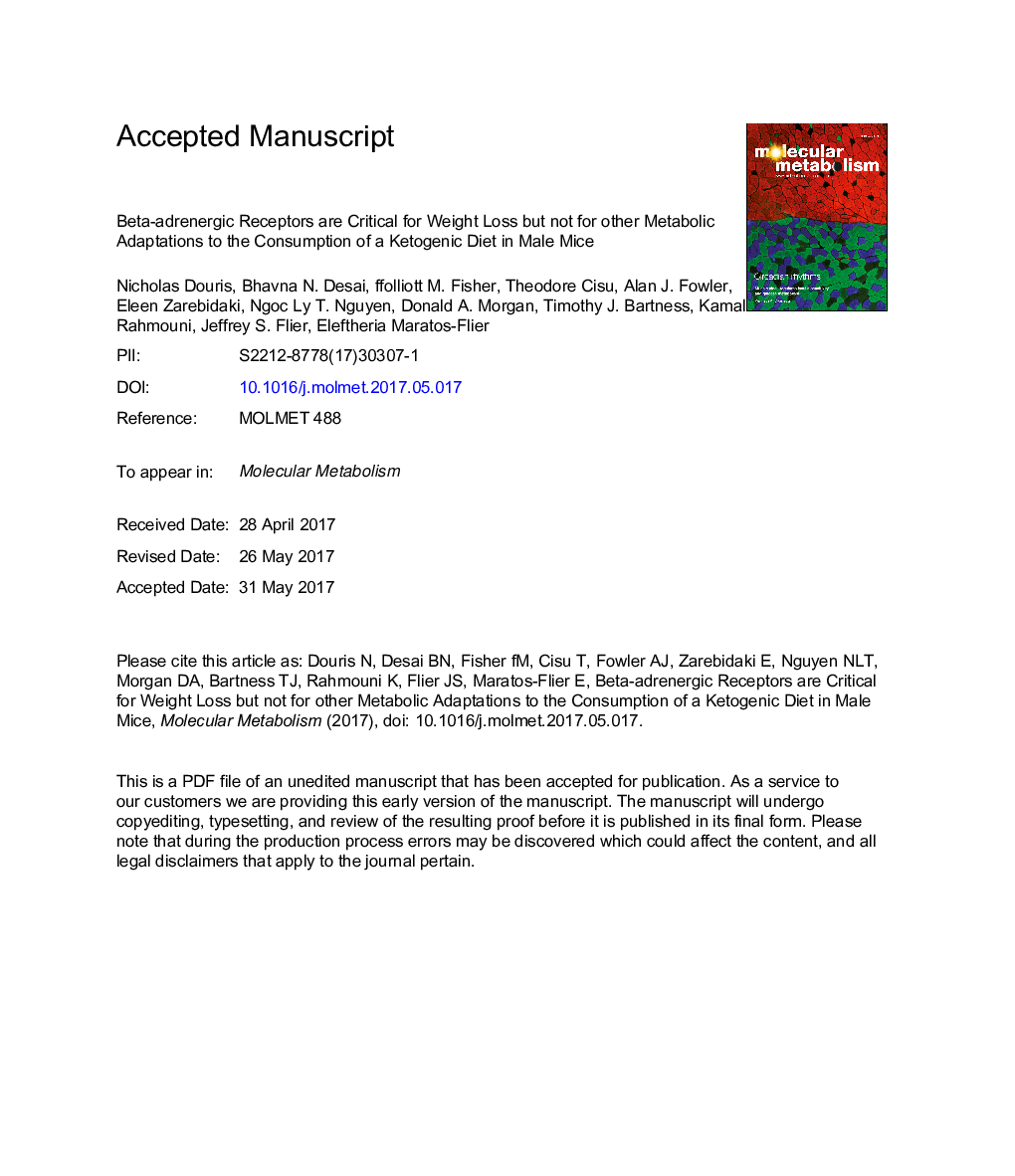| Article ID | Journal | Published Year | Pages | File Type |
|---|---|---|---|---|
| 5618706 | Molecular Metabolism | 2017 | 35 Pages |
Abstract
The response of β-less mice distinguishes at least two distinct categories of physiologic effects in mice consuming KD. In the liver, KD regulates peroxisome proliferator-activated receptor alpha (PPARα)-dependent pathways through an action of FGF21 independent of the SNS and beta-adrenergic receptors. In sharp contrast, induction of interscapular brown adipose tissue (BAT) and increased energy expenditure absolutely require SNS signals involving action on one or more β-adrenergic receptors. In this way, the key metabolic actions of FGF21 in response to KD have diverse effector mechanisms.
Keywords
BATPPARαIWATFGF21SNSSNAUcp1insulin tolerance testperoxisome proliferator-activated receptor alphaITTinguinal white adipose tissuebrown adipose tissuestandard error of the meanintraperitonealKetogenic dietsympathetic nervous systemfibroblast growth factor 21Sympathetic nerve activitySEMEnergy expenditureuncoupling protein 1Weight lossβ-adrenergic receptors
Related Topics
Life Sciences
Neuroscience
Endocrine and Autonomic Systems
Authors
Nicholas Douris, Bhavna N. Desai, ffolliott M. Fisher, Theodore Cisu, Alan J. Fowler, Eleen Zarebidaki, Ngoc Ly T. Nguyen, Donald A. Morgan, Timothy J. Bartness, Kamal Rahmouni, Jeffrey S. Flier, Eleftheria Maratos-Flier,
